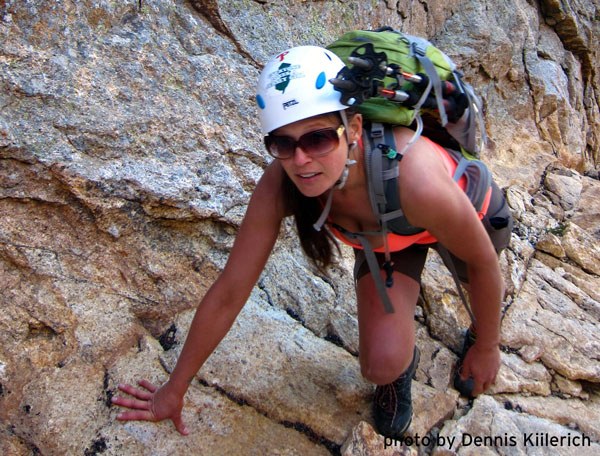
by Courtenay Schulman, MS, CSCS
When setting up a routine, sometimes you just don’t know where to start. Below are some great principles to follow when creating an exercise regime for yourself.
Priority Training: Emphasize exercises most important to your sport first. For hiking or backpacking, do lower body exercises before upper body; for paddling activities, start with upper body and core exercises.
Balance Training: Perform unilateral (single limb) free-weight exercises that require balance before you do bilateral (double-limb) exercises or supported, sitting exercises. Complete one-legged deadlifts or lunges before squats or deadlifts. As you progress through workouts, your muscles will fatigue, making balancing exercises more challenging toward the end of a workout than supported exercises will be.
Weakness Training: Complete exercises that work weaker areas of the body early in your workout so that you recruit the most muscle fibers possible for the hardest exercises. This will help weaker muscles catch up to stronger muscles. To maintain strength in strong muscle groups, do one set for them near the end of the workout. For example, if you know your gluteals are weak, comple your one-legged deadlifts and leaning lunges before hamstring ball curls to help prioritize for both balance and weakness training.
Compound Movements: Work from large to small muscle groups, targeting exercises that work as many muscle groups as possible, such as squats, deadlifts, presses and pulls. If you’re working full body, complete exercises in the following order targeting: (1) thighs, latissimus dorsi, and pectorals; (2) deltoids and gluteals; (3) triceps, biceps, calves, abductors, and adductors; and (4) abdominals, spinal erectors, and muscles of the feet or ankles.
Intensity: Training at or near muscle failure requires greater recovery time. While bodybuilders often train to failure, for alpine training, I recommend a reserve of one to three repetitions on any given exercise to permit higher frequency and greater training volume. Both are conditions specific to endurance requirements. A reserve of two repetitions means that if you are shooting for eight repetitions, select a weight that would allow you to complete eight repetitions with perfect form and one or two additional repetitions if you were to continue to failure but stop at eight. Intensities will vary according to where you are in your training plan.
Timing: When is it best to do strength workouts? Consider your back’s general health. Spinal experts recommend avoiding loaded forward-bending exercises (i.e. heavy squats, good mornings, or deadlifts) until you have been awake and active for at least 1-2 hours. If you enjoy morning workouts, do aerobic exercise early and wait to do your strength exercises after work. If you struggle in the morning, this might be a good time to work out. Remember, most alpine climbs have an early start on summit day, so functioning early in the morning (without coffee!) might be valuable conditioning on its own.
Courtenay Schurman is a personal trainer and co-owner of Body Results. As a passionate outdoor enthusiast, she specializes in conditioning for outdoor athletes. For more how-to exercises and tips, visit Courtenay Schurman’s website at www.bodyresults.com or send her a question at court@bodyresults.com.
Add a comment
Log in to add comments.thanks
 Courtenay Schurman
Courtenay Schurman